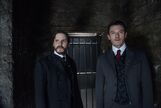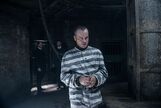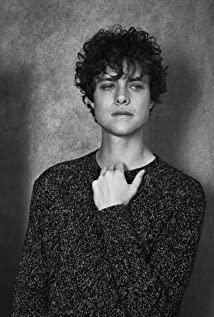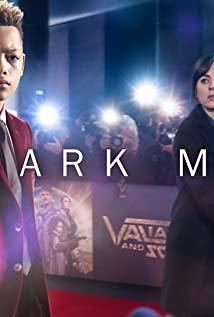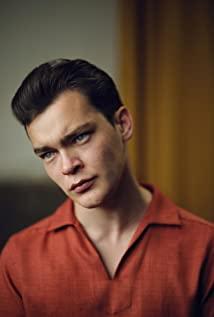Remember last year's popular Netflix American drama "Mind Hunter"? Its successor is here.
Judging from the two episodes that have been broadcast, TNT's new drama "The Silent Angel" has already fired the first shot of the American drama in 2018, and it is undoubtedly the most dramatic in the new drama.
"The Silent Angel" is adapted from the novel of the same name by Caleb Carr ("The Alienist"). The story is set in New York at the end of the 19th century. The maverick psychiatrist Laszlo Chrysler, reporter John Moore, and police secretary Sarah Howard who hopes to become a female police detective, when someone in the police deliberately covers up the crime , Launched parallel investigations with the police, and finally worked together to detect the serial torture of boy prostitutes.
As a mystery novel, Caleb Carr also tries to explore human nature.
The main creative team is star-studded, making this drama much attention before it airs. Director Jacob Verbruggen directed the third season of "Black Mirror" after being transferred to Netflix, and the screenwriting team also included the Emmy Award best director and the father of "True Detective" Kerry Fuyong.
In terms of actors, Daniel Bruch, the "Baron Zemo" who performed well in "Captain America 3", and Luke Evans, the "Archer Bud" in the "The Hobbit" series, co-starred as the duo host. Dakota Fanning, who was born as a child star, also adds bright colors to the show.
High face value x3, absolutely seductive.
Obviously, the blockbuster-level cast has kept the lower limit of this work. After the two episodes were broadcast, we found that the surprise was far more than that.
"The Silent Angel" tells a repressive story and reveals the darkest side of New York society.
In 1896, New York, USA, was prosperous on one side and degenerate on the other. Serial murders strangled the city's throat.
Those who were brutally killed were all underage boys, who were contemptuously referred to as "she", and corpses on the streets were also considered deserved. All this stems from their special identity: child prostitutes.
This group of boys who wore skirts to please the wealthy of the upper class were born lowly in the eyes of the people they served meticulously.
Those who wanted to speak up for these silent low-level souls encountered unprecedented obstacles, making it difficult to investigate.
The demon hiding in the dark even provocatively sent "trophies" to Laszlo. This is showing off, but also a threat.
The murderer wrapped Giorgio's tongue in a newspaper and placed it on Laszlo's wagon.
So at the first meeting of all members, Laszlo told his justice partners that the murderer's desire to kill might put them all in danger.
Not only that, they also had to deal with the conservative and even corrupt dark forces within the police.
The first boy prostitute died and Laszlo was not allowed to enter the scene of the corpse;
John visits the brothel, but is fascinated by drugs by the owner of the brothel with ulterior motives;
Sarah wanted to obtain the file of the death case of a previous boy, but found that it was deliberately hidden;
Sarah searched the archives in the name of the chief to no avail.
As the only help for the protagonist when they were in adversity, Theodore Roosevelt, then chief of the New York Police Department, when he ordered the brothel to be closed for rectification and the relevant person in charge assisted in the investigation, he received only a false promise: the other party verbally agreed. , Turned around and opened the new brothel opposite the original site;
The man who wanted to get justice for his son's death was violently sealed, and the unnamed body was burned...
All this directly pointed to one of the most serious social problems in New York at the time: police corruption.
Within the police system, conservatives headed by Conner strongly opposed the reforms that Roosevelt pushed forward. They ridiculed Laszlo's new detective methods, the Jewish origin of the Isaacson brothers, and Sarah's status as a female police officer, and tried their best to thwart things.
Because the investigative methods are too avant-garde, coupled with Jewish identity, detective Marcus Isaacson and his brother Lucius Isaacson are just marginal people in the conservative police station.
Not only that, Connor and his party accept bribes from brothel owners to protect the interests of those in the chain of interests, cover up and tolerate crimes.
"The Silent Angel" uses two episodes to outline a dying New York. Whether it is judicial darkness, hatred and dwarfing women, squeezing child labor, discriminating against and ostracizing non-self races, all kinds of injustice and unbearableness have been vividly displayed in these two episodes, and they have become a mist that envelopes the entire city.
The beginning of the film is New York under dense fog, and the dim light of the torch in the Statue of Liberty is dim.
Perhaps it is easier to give birth to heroes in this era.
Of course, you can't be a lonely hero.
Like many European and American film and television works, the protagonist group of "Silent Angels" is also an "iron triangle" of two men and one woman.
HP trio: Who called us?
Before the 20th century, when the research of psychiatric science was underdeveloped, all people with mental defects or related pathological behaviors were called Alien , and those who researched and treated them were called Alienist .
Alien: #$%^&*? (Who called me?)
In "The Silent Angel", one of the protagonists, Laszlo Chrysler, is a PhD in psychology, also known as "Alienist". Laszlo was cold outside and hot inside. After breaking up with his good friend John, although he kept saying "a little anger and introspection is good for John", he still couldn't help but let the servant follow and take care of the drunk John.
Another male protagonist, John Moore, worked for the "New York Times", was a portraitist, and was equivalent to a newspaper photographer in that era. John has excellent observation ability, which makes him outstanding drawing skills. But a compassionate heart made him unable to help beautify the tragic dead under his paint. Although he didn't agree with or optimistic about Laszlo's extraordinary behavior, he always helped him unconsciously.
In Laszlo's eyes, the death of the first deceased Giorgio was unconsciously beautified by John.
The heroine Sarah Howard is the secretary of New York City Police Chief Roosevelt. Although John was called a "typist", she was indeed the first female employee hired by the New York Police Department.
She has an extraordinary power of action and is full of enthusiasm for the pursuit of truth. She admired Dr. Laszlo Chrysler very much, which prompted her to join Laszlo's small group.
This combination of genius forerunner + keen observer + extraordinary action school fits very well, and sparks are everywhere when they meet each other.
The three protagonists have their own personalities, and their skill points complement each other, making it a perfect combination.
In this group, Laszlo is undoubtedly the absolute core of the team.
First of all, he is familiar with psychology, which gives him an advantage when talking with suspects.
When the police had determined that Wolf, the mental patient who killed his lover, was the murderer of Giorgioo, Laszlo only talked briefly with Wolf and determined that the other party was just a "dead ghost" who had been caught to make up for it.
More importantly, at the end of the first episode, Laszlo tried to think about the problem from the perspective of the murderer.
"Only when I become him can I truly understand what I am.... I must look at life through his eyes, feel the pain he feels, and walk the path he has traveled."
Laszlo's knowledge of solving crimes far exceeds the limitations of the times, focusing on the simulation of the murderer's manual and behavior patterns, rather than just considering who the murderer is. This has begun to take the embryonic form of psychological profiling, which can be said to have created a precedent for modern criminal investigation methods.
Dr. Laszlo Chrysler's profession is a psychologist, which created his special investigation mode that focuses on simulating killer psychology.
It's just that this method of handling the case was too avant-garde, and was blocked by many defenders at the time.
At this time, Sarah's role became prominent. The label of "female" that made her despised became an excellent shelter for her secretly assisting Laszlo in the police station. As a result, she can rely on the identity of the secretary of the chief to get access to the files that Laszlo and John are absolutely impossible to obtain.
Like Laszlo, Sarah's behavior made her very different from the 99% of New York women at the time. She smokes, hates waistbands and evening dresses, and resists the harsh rules and regulations that society imposes on women. Even if she joins the police station, her goal is far more than just being a small civil servant who keeps herself safe, but hoping to fight crimes like a male policeman.
From Dakota Fanning's face, it can be seen that Sarah is unwilling and resentful in such a cramped environment.
Among these two companions who are incompatible with the world, John Moore is gentle and decent, treats others politely, and takes the initiative in investigating the case but in a traditional way. He will not make any actions that are too shocking, and he can accept the less-conventional words and deeds of his partners. In Laszlo's words, John represents the kind of "goodness that everyone is good."
Are all your little angels named John?
It is this person who keeps the entire team from being too overwhelmed and out of control. He lubricated the entire group and became the link between the "Lazlow team" and the "normal society".
Two of the three protagonists are outside the system, and one is within the system. They are closely connected with each other, and the relationship is quite tense.
Laszlo and John are a good pair of friends, and they are also excellent partners. Although they have occasional disputes and their ideas are not completely the same, they have cooperated closely and have trust in each other in their hearts, which can be called the American version of "Holmes and Watson."
The interaction between the two male protagonists is also full of emotions.
John and Sarah are old acquaintances, and they are also an opportunity to introduce Sarah into the team. And judging from the forecast, maybe in the future there will be a brand new relationship between them.
Sarah: Indifferent.
Sarah's respect and admiration for Laszlo is a supplement to Laszlo's mobility, and the relationship between them is also quite fascinating.
This "iron triangle" is already very interesting. Coupled with Roosevelt as the strongest foreign aid, and the Isaacson brothers, the entire team has good looks and laughs, and the chemical effect is perfect.
The Isaacson brothers are fraternal twins who are committed to combining forensic medicine with modern medicine for criminal investigation.
In addition to the characters and plot, the third winning point of this play is the exquisite details .
As a period drama, the perfect reproduction of the scene is of course very important, but it is just a basic skill. "The Silent Angel" is truly able to see the truth in the subtleties.
For example, at the beginning of the first episode, after the police officers on patrol spotted the dead, they chose to tap nearby metal products with truncheons to make a loud noise.
This is equivalent to the "fire warning" of modern society.
This may be a bit curious in the eyes of viewers who are accustomed to watching Hong Kong dramas. In fact, compared with common police sentries in British colonial countries, in the era when communication tools were not very developed, American policemen used this simple behavior of striking iron weapons to remind the police and attract the support of their peers.
Another striking detail is about the murderer.
This style of behavior is quite Hannibal's murderer, and the murderer's tactics are outrageous. Not only did he commit the crime cruelly, he even took the offal for cooking after the murder.
It really is the brother of Hannibal who has been missing for many years (vomit).
But his mind is very careful: in order to avoid leaving fingerprints in the process of the attack, he polished off the skin of his fingertips.
Close-ups of the suspect’s fingers appear many times in the play.
This especially reflects the work's grasp of the sense of the times.
The story of "The Silent Angel" took place in 1896. Just four years ago, in 1892, a murder occurred in a small town called Necochea in Argentina. Two young children were killed in their own home. With the assistance of the fingerprint research expert Vosetti Department, Sergeant Alfarez used a fingerprint extracted from the door frame of the crime scene to successfully capture the murderer.
Encouraged by this case, the Vossetti department wrote and published the book "Fingerprints", and the Argentine police authorities officially began to identify the suspects with fingerprints. In the past four years, this method of solving crimes has been widely used by police departments all over the world, and "fingerprint detection technology" has become a routine investigative method.
This meticulous pursuit of the sense of the times reflects the mentality of the crew not eager for quick success, and dedicated to carefully polishing the quality of the drama, which can be called a conscience.
The streets of New York at the end of the 19th century. The costumes, scenery and props are all exquisite.
There is also a very interesting tidbit about the original work of this work. This tidbit was revealed by the author Kaleber Carr himself in the postscript.
It is said that the editor in charge of Kaleber is obsessed with his status as a "non-fiction writer", so when "Silent Angel" was born, in order to make the editor accept this topic, Kaleber lied that it was a real one. The story also forged a photo of "Dr. Chrysler" and President Roosevelt in his later years. At that time, he was looking for old photos that fit the image of Dr. Chrysler in his imagination, and finally selected the Norwegian composer Edward Grieg.
Not to mention, the "Genuine Laszlo" in the author's mind is inexplicably similar to Daniel Bruch's Laszlo.
After the first episode of "The Silent Angel" was broadcast, TV Fanatic spoke highly of this episode, believing that it "brought a gloomy sense of fun. The atmosphere of the story has been created from the beginning of the scene. The art director is very Excellent, the setting of the role is also unforgettable."
And what is even more praiseworthy is that the show does not deliberately cater to and please the audience's coldness.
Of course, large-scale heavy-mouth pictures are indispensable in American dramas of this theme. However, "The Silent Angel" shows great restraint in the grasp of this heavy-mouthed plot. It does not use it as a gimmick to stimulate the audience's senses, but only works diligently to promote the development of the plot and portray the murderer's character.
When the boy prostitute Giorgio was found "worn in a white dress, his right hand was severed, his abdomen was cut open, his internal organs were stacked on his feet, his genitals were removed, and his eyes were lost."
Similarly, in today's prevalent dual male protagonist configuration, the two male protagonists of "Silence Angel" are infinitely close to the Sherlock Holmes and Watson in "Detective Sherlock" (even the brothers Roosevelt and Isaacson are a bit like Lestra Are there German, Anderson and Donovan?). Their interaction is undoubtedly full of sparks, but this kind of ambiguity also ends, and it is far from "selling corruption".
Lang Cai Lang looks!
The excellent chemical reaction between the protagonists is comparable to the conscientious production of the movie, and the exquisite detail display. The stunning feeling brought to us by the two short episodes is no less than the first season of "Sherlock".
And the peculiar realism of the American crime theme gives it a different flavor.
View more about The Alienist reviews




